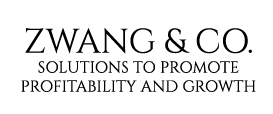In his new role as Senior Editor of Packaging and Labels, David will be looking at the demands, technologies and the inflection points that are driving the use and growth of digital packaging and labels. The shift from analog to digital production in this area has already started, with the real growth ahead of us. In this article, David takes a look at the some of the drivers and constraints for migration from conventional to digital processes in packaging and label production. There are more moving parts than you might expect.
The benefits of digital technology in print production have long been demonstrated, and we see them in the increased analog-to-digital conversion rates in many print applications. While electrophotography (EP), was the early entry technology and is still the major contributor of volume and value in the digital market conversion, production inkjet is now growing more rapidly. According to a recent Smithers Pira study, The Future of Digital Printing to 2024, “Inkjet is forecast to overtake electro-photography after 2019; and by 2024, inkjet will account for 56% of the value and 53% of the digital print volume”. Although, putting it in perspective, keep in mind that digital print volume is still less than 50% of the total volume as compared to analog. We know that there are many document printing applications, like direct mail and commercial print, that are transitioning to or already settled into fully digital print production. However, this journey has been more of an evolution than a revolution, primarily due to the development pace of the digital technologies, tempered by market education, acceptance and demand. Some of these same developments in digital technology are likely to translate to packaging production, and there is significant overall growth projected.
Let’s look more closely at packaging and label production. Unlike document printing and distribution which can be replaced by online and mobile channels, printed packaging is not only required but consumption is increasing with population growth, regularly increasing the demand. Global packaging production in general is projected to maintain an annual growth rate of approximately 3.5%, but how much of that growth or of the estimated $900 billon market size can be expected to transition to digital, and more importantly, in what period of time?
Some of the same drivers that have driven the growth of digital print applications have a place in packaging and label production, although when you start to look at the rest of the drivers and constraints, many of those benefits may be outweighed by disadvantages. We will look deeper into those in future articles.







